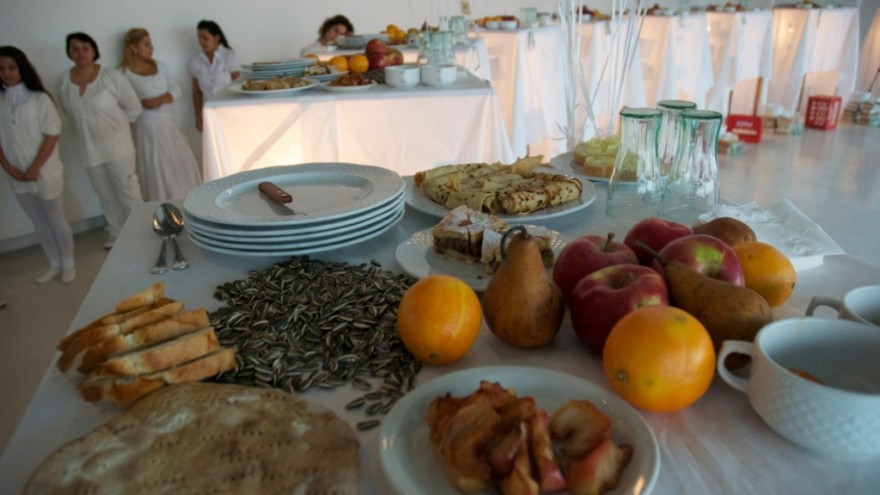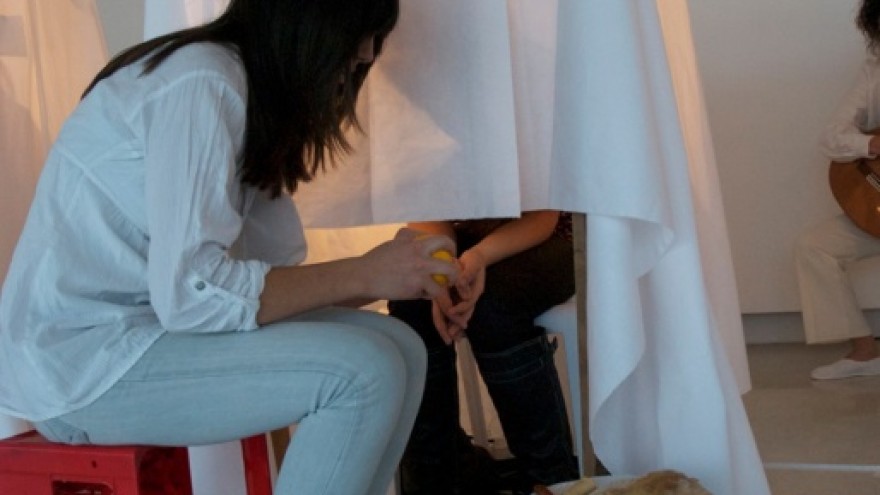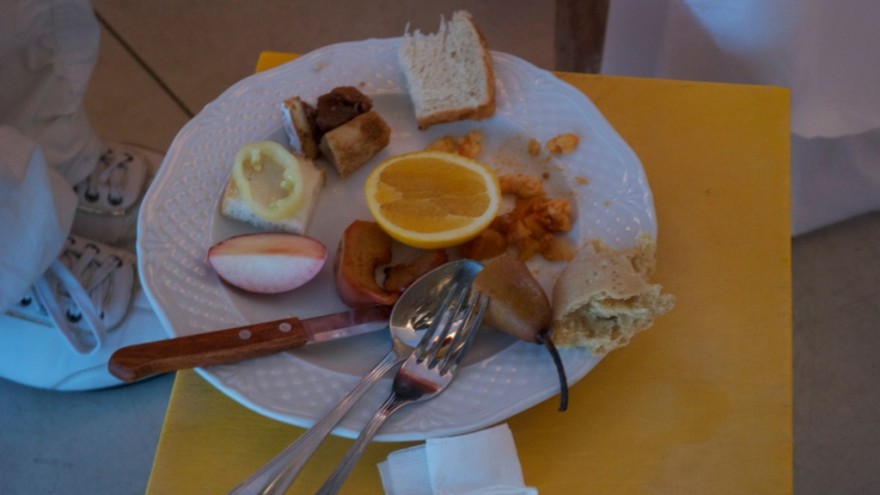Marije Vogelzang’s latest installation “Eat Love Budapest” was a multi-sensory performance project that used food as a medium for getting strangers to share not only food with each other, but also stories.
“Eat Love Budapest” brought together Roma women in the Hungarian capital to emphasise the individuality and beauty that is inherently part of each person, even the nameless ones we pass by on the street.
This food performance took place over three days and saw 10 Roma women being invited to anonymously share their stories with one stranger at a time. Each of the 10 women had to feed her guest food that had a personal meaning to her. The feeding took place by hand and was accompanied by significant stories, memories and songs about the food.
Historically Romani people have often been discriminated against in various instances and this project aimed to serve as a form of reconciliation, using food as the medium.
Visitors to the installation were led to a small tent-like space and invited to sit inside. The inside of this “tent” was reminiscent of a child’s play space with walls made of a thin fabric onto which drawings, texts and photographs were pinned up by the Roma women. The visitor was invited to sit on a simple chair, in a position from which they could not see outside of the enclosure. The only thing they could see was a dish of food on a raised platform on the floor, as well as the legs and hands of the seated Roma women.
Once both parties were comfortably seated the Roma woman, dressed completely in white, washed her hands in view of the visitor and started talking freely about her life and her personal memories and experiences. As she spoke to the visitor she also fed them food that has a personal significance to her. Different dishes were fed to the visitor by hand using a spoon, much like a mother would feed a young child. The preparation and serving of the food became a performance in itself.
When the meal was finished the Roma woman left, ensuring that she would never meet the visitor face-to-face. The format of the installation meant that every visitor experienced something completely different, different food, different stories and different messages and recipes in each tent.





















